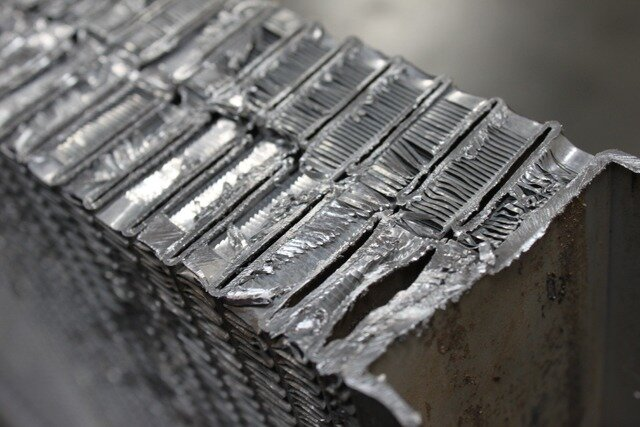Building a pool with natural stone features is a great way to enhance the beauty and functionality of your outdoor space. Natural stone offers timeless elegance and a rustic appeal that no other material can replicate. Whether you’re looking to create a serene oasis or a dramatic focal point, incorporating natural stone into your pool area can elevate its design. Here’s a comprehensive guide to help you build a pool that blends seamlessly with nature.
Plan Your Design and Choose Your Stone
Before you start any construction, it’s important to plan your design carefully. The type of natural stone you choose will have a significant impact on the overall look of your pool. Popular options include flagstone, slate, limestone, and travertine. Each stone has its own characteristics, such as texture, color, and durability, so consider what suits your landscape and aesthetic preferences.
If you’re unsure where to start, take a walk through local quarries or stone yards to see the different types available. This hands-on approach will help you visualize how the stones will look in your pool area. Also, think about whether you want to use the stone for the pool’s coping (the edge), decking, waterfalls, or all of the above.
Choose the Right Location
Location is crucial when designing a pool with natural stone features. Ideally, the pool should be placed in a spot that maximizes sunlight exposure while still providing some shade for comfort. If you’re incorporating stone features like a waterfall or a stone-lined pool, it’s essential to select a site that accommodates these elements without overwhelming the space.
Consider the surrounding landscape too. Natural stone blends best with environments that already feature greenery, plants, and earthy tones. If your backyard is heavily landscaped, a stone pool area will complement the natural beauty of your garden.
Build the Pool Structure
Once your design is in place, the next step is to build the pool structure itself. While the use of natural stone will come later, it’s crucial to have a solid foundation. Hiring a professional pool contractor is highly recommended for this step. They will help you construct the pool shell, ensuring that everything is level and properly reinforced for the stones you plan to add.
Depending on your design, the pool could be in-ground or above-ground. Be sure to also plan for the plumbing and electrical systems, especially if you’re planning on adding lighting or a water feature like a waterfall or fountain.
Install Natural Stone Features
Now, the fun part begins: installing the natural stone. Start with the pool’s coping, which is the material that surrounds the top edge of the pool. Flagstone is a popular choice here due to its versatility and wide range of colors. It’s durable and provides a slip-resistant surface, which is essential for pool areas.
For the pool deck, choose stones that offer both durability and aesthetics. Slate and travertine are both excellent options for creating an elegant and functional deck around the pool. These stones are slip-resistant, which is crucial for poolside safety. For an added touch, consider integrating a stone waterfall or stone columns along the pool’s edge.
Incorporate Water Features
Water features such as waterfalls, fountains, or spillways can add an extra dimension to your natural stone pool. The sound of running water creates a relaxing atmosphere, while the stones themselves lend texture and visual interest. When planning water features, make sure they blend harmoniously with your pool design.
If you’re adding a waterfall, for instance, it’s important to work with a designer or contractor who understands the flow of water and how it interacts with the stone. They can help create a feature that not only looks good but also functions properly, with the right flow rate and drainage to avoid any water pooling around the stone.
Focus on Lighting and Landscaping
Lighting plays a huge role in showcasing your pool and stone features, especially at night. Consider installing built-in lights within the stone coping or underneath the waterline to illuminate the pool’s edges. This will highlight the natural stone’s texture and bring a magical ambiance to your backyard.
Additionally, landscaping around the pool can enhance the natural stone features. Use plants that complement the earthy tones of the stone, such as ferns, grasses, or shrubs. A few well-placed trees can also provide shade and add to the tranquil atmosphere of your pool area.
Maintenance and Care
Natural stone is relatively low-maintenance, but it does require some care to keep it looking its best. Regularly clean the pool and stone surfaces to prevent dirt, debris, and algae buildup. Be sure to use a gentle cleaner that won’t damage the stone’s finish.
For areas like the pool deck or waterfall, you may want to reseal the stone periodically to protect it from the elements and extend its lifespan. Additionally, keep an eye on any cracks or chips, and repair them promptly to maintain the structural integrity of the stone.
A Pool That Stands Out
Building a pool with natural stone features is a rewarding project that can dramatically transform your outdoor space. If you are looking for help with pool installation in Charlotte, try searching for “pool installation Charlotte.” There are contractors that can help you through the process. From planning and choosing the right stone to incorporating water features and lighting, there are numerous ways to make your pool area stand out. By following these steps and putting thought into each detail, you’ll have a stunning, natural stone pool that’s both beautiful and functional for years to come. With a little planning and the right materials, your dream pool can be a reality.

Dilawar Mughal is an accomplished author with a passion for storytelling. His works span various genres, from thrilling mysteries to heartfelt romance novels. With a keen eye for detail and a knack for character development, Sana Fatima weaves engaging narratives that captivate readers and transport them to new worlds.










